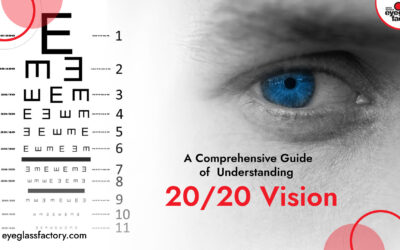If you’re in need of vision correction and desire a seamless transition between different distances, progressive lenses may be the solution for you. These lenses offer a multifocal design that eliminates the need for multiple pairs of glasses. In this article, we will explore the pros and cons of progressive lenses to help you make an informed decision about your eyewear.
What Are Progressive Lenses?
Progressive lenses, also known as multifocal lenses, are designed to provide clear vision at varying distances. Unlike traditional bifocal or trifocal lenses, progressive lenses offer a smooth transition between different focal points, allowing wearers to see clearly at all distances. They contain three zones—distance vision at the top, intermediate vision in the middle, and near vision at the bottom.
Who Uses Progressive Lenses?
Progressive lenses are suitable for individuals who experience presbyopia, an age-related condition that affects the eye’s ability to focus on close objects. Presbyopia typically becomes noticeable around the age of 40 and affects a significant portion of the population. Those who require both distance and near vision correction can benefit from the convenience and functionality of progressive lenses.
Benefits of Progressive Lenses
Seamless Vision: Progressive lenses provide a smooth transition from near to intermediate to distance vision. There are no visible lines on the lenses, making them aesthetically appealing and more natural-looking compared to traditional bifocal or trifocal lenses.
Convenience: With progressive lenses, you don’t need to switch between multiple pairs of glasses for different activities. Whether you’re reading a book, using a computer, or driving, progressive lenses adapt to your visual needs without requiring you to constantly switch eyewear.
Natural Head Movement: Unlike bifocal lenses that have a distinct line separating the different focal areas, progressive lenses allow wearers to maintain a natural head position and move their eyes freely, resulting in a more comfortable and natural visual experience.
Enhanced Aesthetics: Progressive lenses eliminate the visible lines present in traditional bifocal or trifocal lenses, giving a more youthful and fashionable appearance. You can enjoy clear vision without compromising your style.
Drawbacks of Progressive Lenses
Adaptation Period: Adjusting to progressive lenses may require some time and patience. Initially, you may experience slight distortions or blurry areas when shifting your gaze between different focal points. However, most individuals adapt to these changes within a few days or weeks.
Peripheral Distortion: The peripheral areas of progressive lenses may exhibit some distortion or slight blurring. This can be noticeable when looking to the sides or in certain head positions. However, the central vision, which covers the main visual areas, remains clear and unaffected.
Lens Size Restrictions: Progressive lenses require a certain minimum lens size to accommodate the different focal zones. In some instances, the frame size or shape you desire may not be suitable for progressive lenses, limiting your options when choosing frames.
Conclusion
Progressive lenses offer a convenient and aesthetically pleasing solution for individuals requiring both distance and near vision correction. With seamless transitions between different focal points, progressive lenses provide enhanced convenience and a natural visual experience. While there may be an initial adaptation period and some peripheral distortion, the benefits of progressive lenses outweigh the drawbacks for many wearers.
When considering progressive lenses, it’s important to consult with professionals at reputable lens stores in Santa Barbara or your local Contact Lens Store. They can guide you in choosing the right lens options based on your prescription.




